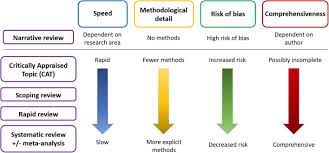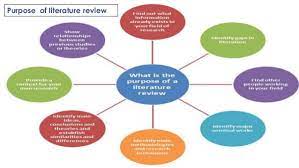What is a literature review?
Literature reviews are foundational to research proposals, theses and dissertations, as well as scholarly books and articles. In addition to their place within larger pieces of writing, literature reviews are also published as a type of free-standing article.
Let’s use a simple definition for a literature review: “a systematic syntheses of previous work around a particular topic” (Salkind, 2010, p. 726) . The key words suggest questions we need to answer:
- What systems will we use to find, organize, and analyze the literature?
- How will we synthesize the literature?
- Which previous work should be included or excluded?
- What topics are relevant?
Literature reviews play a critical role in scholarship because science remains, first and foremost, a cumulative endeavour (vom Brocke et al., 2009). As in any academic discipline, rigorous knowledge syntheses are becoming indispensable in keeping up with an exponentially growing eHealth literature, assisting practitioners, academics, and graduate students in finding, evaluating, and synthesizing the contents of many empirical and conceptual papers. Among other methods, literature reviews are essential for: (a) identifying what has been written on a subject or topic; (b) determining the extent to which a specific research area reveals any interpretable trends or patterns; (c) aggregating empirical findings related to a narrow research question to support evidence-based practice; (d) generating new frameworks and theories; and (e) identifying topics or questions requiring more investigation (Paré, Trudel, Jaana, & Kitsiou, 2015).
Literature reviews can take two major forms. The most prevalent one is the “literature review” or “background” section within a journal paper or a chapter in a graduate thesis. This section synthesizes the extant literature and usually identifies the gaps in knowledge that the empirical study addresses (Sylvester, Tate, & Johnstone, 2013). It may also provide a theoretical foundation for the proposed study, substantiate the presence of the research problem, justify the research as one that contributes something new to the cumulated knowledge, or validate the methods and approaches for the proposed study (Hart, 1998; Levy & Ellis, 2006).
The second form of literature review, which is the focus of this chapter, constitutes an original and valuable work of research in and of itself (Paré et al., 2015). Rather than providing a base for a researcher’s own work, it creates a solid starting point for all members of the community interested in a particular area or topic (Mulrow, 1987). The so-called “review article” is a journal-length paper which has an overarching purpose to synthesize the literature in a field, without collecting or analyzing any primary data (Green, Johnson, & Adams, 2006).
When appropriately conducted, review articles represent powerful information sources for practitioners looking for state-of-the art evidence to guide their decision-making and work practices (Paré et al., 2015). Further, high-quality reviews become frequently cited pieces of work which researchers seek out as a first clear outline of the literature when undertaking empirical studies (Cooper, 1988; Rowe, 2014). Scholars who track and gauge the impact of articles have found that review papers are cited and downloaded more often than any other type of published article (Cronin, Ryan, & Coughlan, 2008; Montori, Wilczynski, Morgan, Haynes, & Hedges, 2003; Patsopoulos, Analatos, & Ioannidis, 2005). The reason for their popularity may be the fact that reading the review enables one to have an overview, if not a detailed knowledge of the area in question, as well as references to the most useful primary sources (Cronin et al., 2008). Although they are not easy to conduct, the commitment to complete a review article provides a tremendous service to one’s academic community (Paré et al., 2015; Petticrew & Roberts, 2006). Most, if not all, peer-reviewed journals in the fields of medical informatics publish review articles of some type.
The main objectives of this chapter are fourfold: (a) to provide an overview of the major steps and activities involved in conducting a stand-alone literature review; (b) to describe and contrast the different types of review articles that can contribute to the eHealth knowledge base; (c) to illustrate each review type with one or two examples from the eHealth literature; and (d) to provide a series of recommendations for prospective authors of review articles in this domain.
Overview of the Literature Review Process and Steps
As explained in Templier and Paré (2015), there are six generic steps involved in conducting a review article:
- formulating the research question(s) and objective(s),
- searching the extant literature,
- screening for inclusion,
- assessing the quality of primary studies,
- extracting data, and
- analyzing data.
Although these steps are presented here in sequential order, one must keep in mind that the review process can be iterative and that many activities can be initiated during the planning stage and later refined during subsequent phases (Finfgeld-Connett & Johnson, 2013; Kitchenham & Charters, 2007).
Formulating the research question(s) and objective(s): As a first step, members of the review team must appropriately justify the need for the review itself (Petticrew & Roberts, 2006), identify the review’s main objective(s) (Okoli & Schabram, 2010), and define the concepts or variables at the heart of their synthesis (Cooper & Hedges, 2009; Webster & Watson, 2002). Importantly, they also need to articulate the research question(s) they propose to investigate (Kitchenham & Charters, 2007). In this regard, we concur with Jesson, Matheson, and Lacey (2011) that clearly articulated research questions are key ingredients that guide the entire review methodology; they underscore the type of information that is needed, inform the search for and selection of relevant literature, and guide or orient the subsequent analysis.
Searching the extant literature: The next step consists of searching the literature and making decisions about the suitability of material to be considered in the review (Cooper, 1988). There exist three main coverage strategies. First, exhaustive coverage means an effort is made to be as comprehensive as possible in order to ensure that all relevant studies, published and unpublished, are included in the review and, thus, conclusions are based on this all-inclusive knowledge base. The second type of coverage consists of presenting materials that are representative of most other works in a given field or area. Often authors who adopt this strategy will search for relevant articles in a small number of top-tier journals in a field (Paré et al., 2015). In the third strategy, the review team concentrates on prior works that have been central or pivotal to a particular topic. This may include empirical studies or conceptual papers that initiated a line of investigation, changed how problems or questions were framed, introduced new methods or concepts, or engendered important debate (Cooper, 1988).
Screening for inclusion: The following step consists of evaluating the applicability of the material identified in the preceding step (Levy & Ellis, 2006; vom Brocke et al., 2009). Once a group of potential studies has been identified, members of the review team must screen them to determine their relevance (Petticrew & Roberts, 2006). A set of predetermined rules provides a basis for including or excluding certain studies. This exercise requires a significant investment on the part of researchers, who must ensure enhanced objectivity and avoid biases or mistakes. As discussed later in this chapter, for certain types of reviews there must be at least two independent reviewers involved in the screening process and a procedure to resolve disagreements must also be in place (Liberati et al., 2009; Shea et al., 2009).
Assessing the quality of primary studies: In addition to screening material for inclusion, members of the review team may need to assess the scientific quality of the selected studies, that is, appraise the rigour of the research design and methods. Such formal assessment, which is usually conducted independently by at least two coders, helps members of the review team refine which studies to include in the final sample, determine whether or not the differences in quality may affect their conclusions, or guide how they analyze the data and interpret the findings (Petticrew & Roberts, 2006). Ascribing quality scores to each primary study or considering through domain-based evaluations which study components have or have not been designed and executed appropriately makes it possible to reflect on the extent to which the selected study addresses possible biases and maximizes validity (Shea et al., 2009).
Extracting data: The following step involves gathering or extracting applicable information from each primary study included in the sample and deciding what is relevant to the problem of interest (Cooper & Hedges, 2009). Indeed, the type of data that should be recorded mainly depends on the initial research questions (Okoli & Schabram, 2010). However, important information may also be gathered about how, when, where and by whom the primary study was conducted, the research design and methods, or qualitative/quantitative results (Cooper & Hedges, 2009).
Analyzing and synthesizing data: As a final step, members of the review team must collate, summarize, aggregate, organize, and compare the evidence extracted from the included studies. The extracted data must be presented in a meaningful way that suggests a new contribution to the extant literature (Jesson et al., 2011). Webster and Watson (2002) warn researchers that literature reviews should be much more than lists of papers and should provide a coherent lens to make sense of extant knowledge on a given topic. There exist several methods and techniques for synthesizing quantitative (e.g., frequency analysis, meta-analysis) and qualitative (e.g., grounded theory, narrative analysis, meta-ethnography) evidence (Dixon-Woods, Agarwal, Jones, Young, & Sutton, 2005; Thomas & Harden, 2008).
Source: Guy Paré and Spyros Kitsiou.





12 Aug 2021
22 Oct 2020
12 Aug 2021
12 Aug 2021
12 Aug 2021